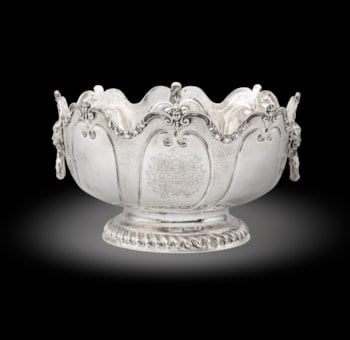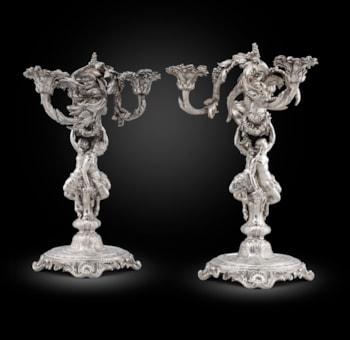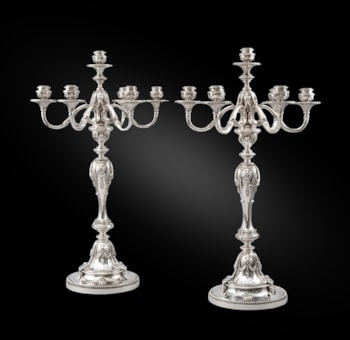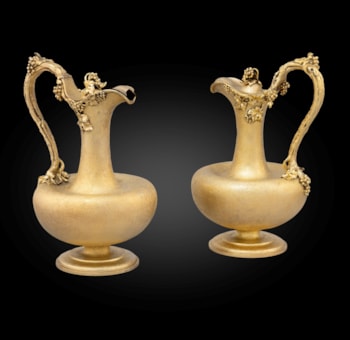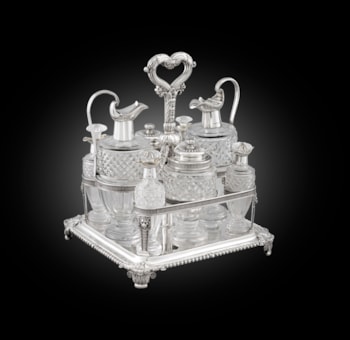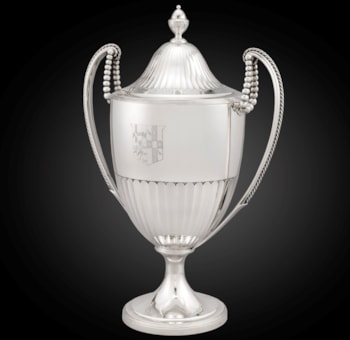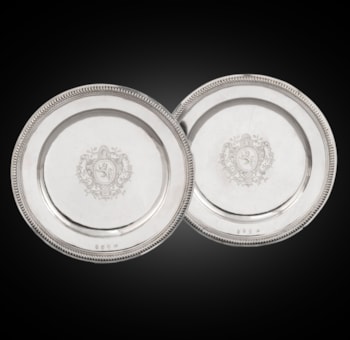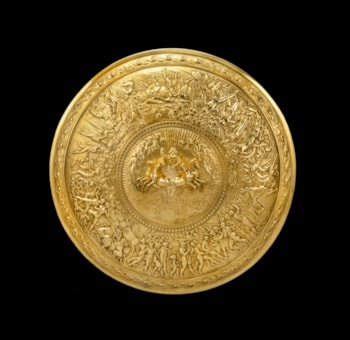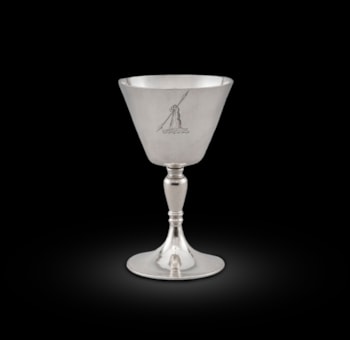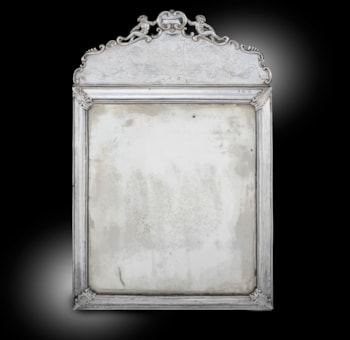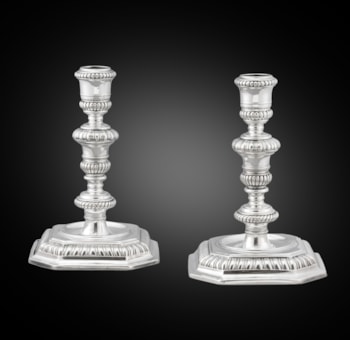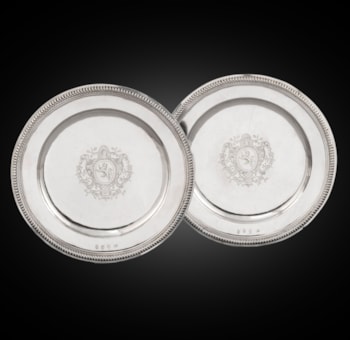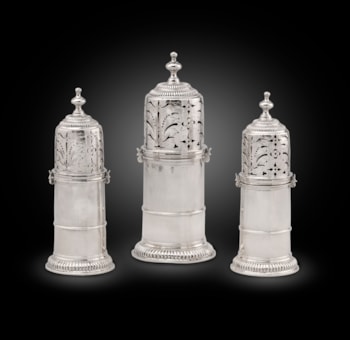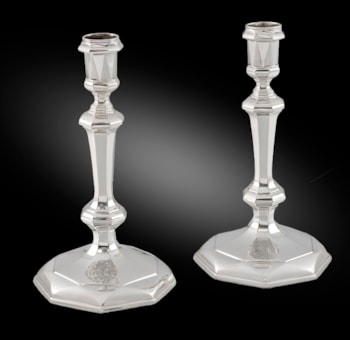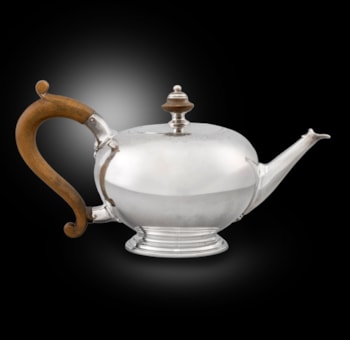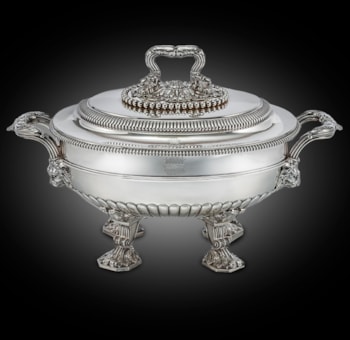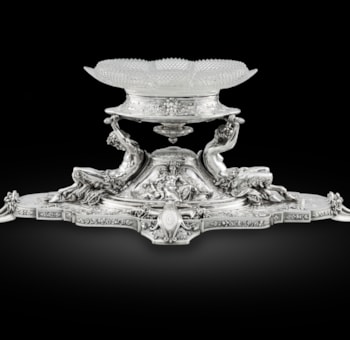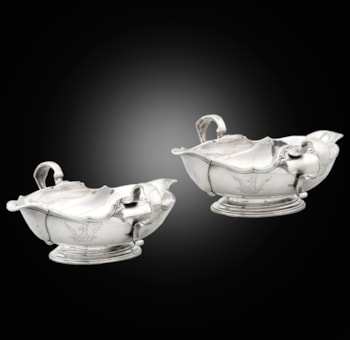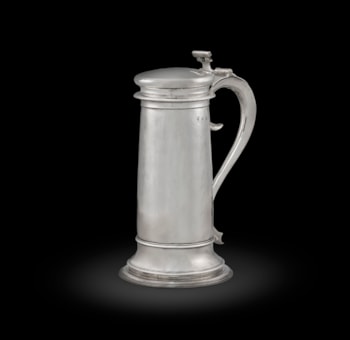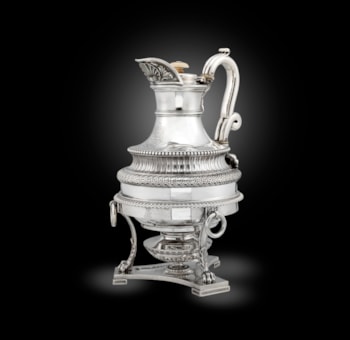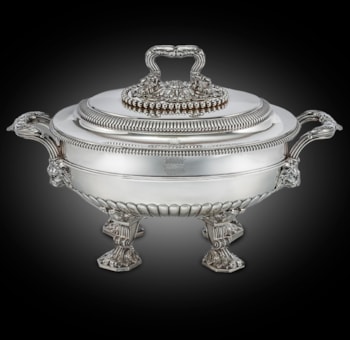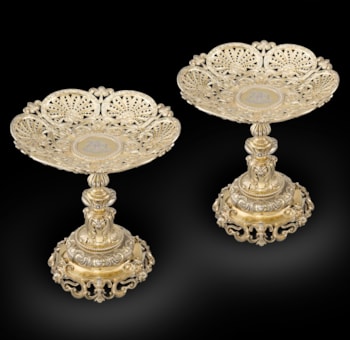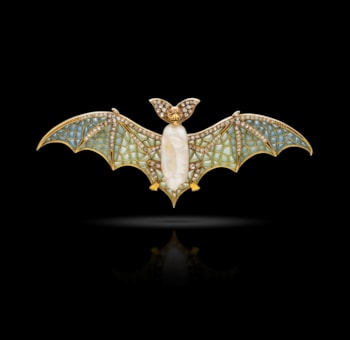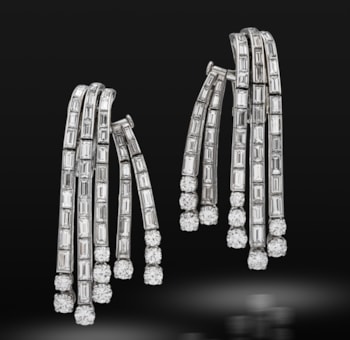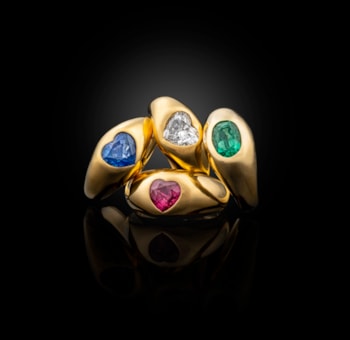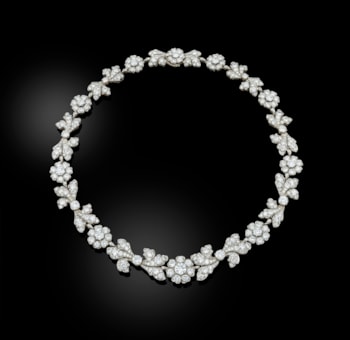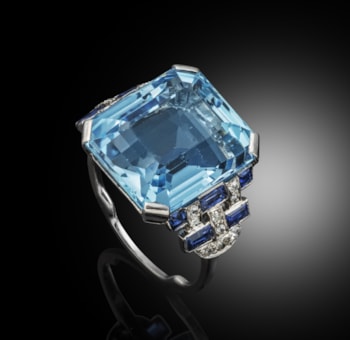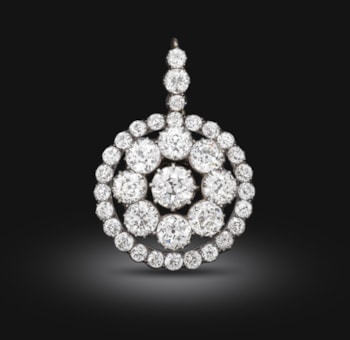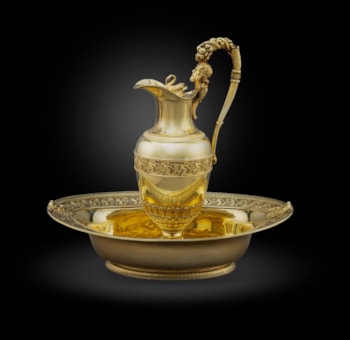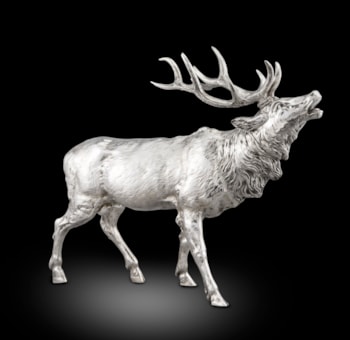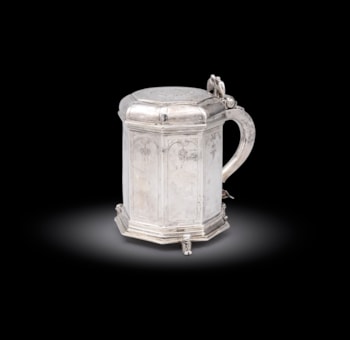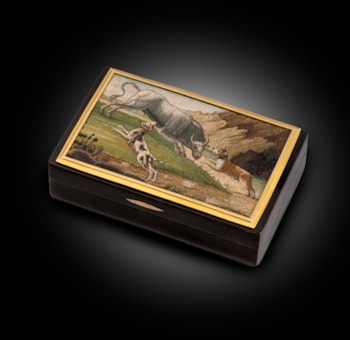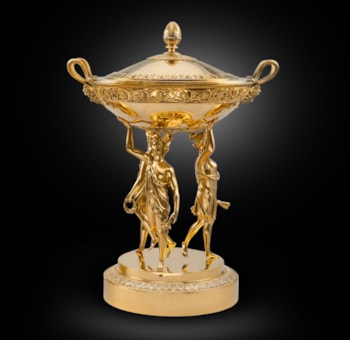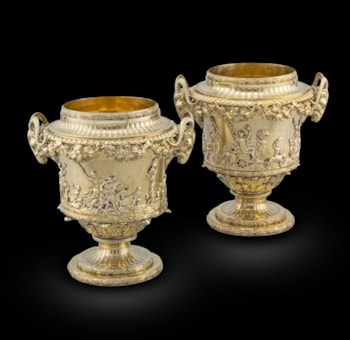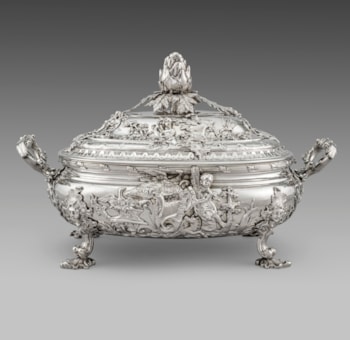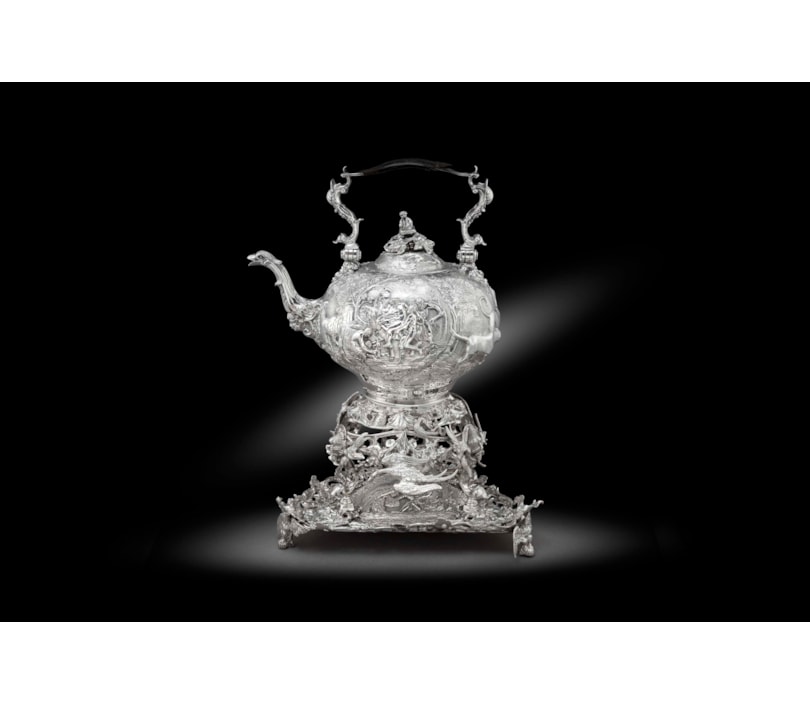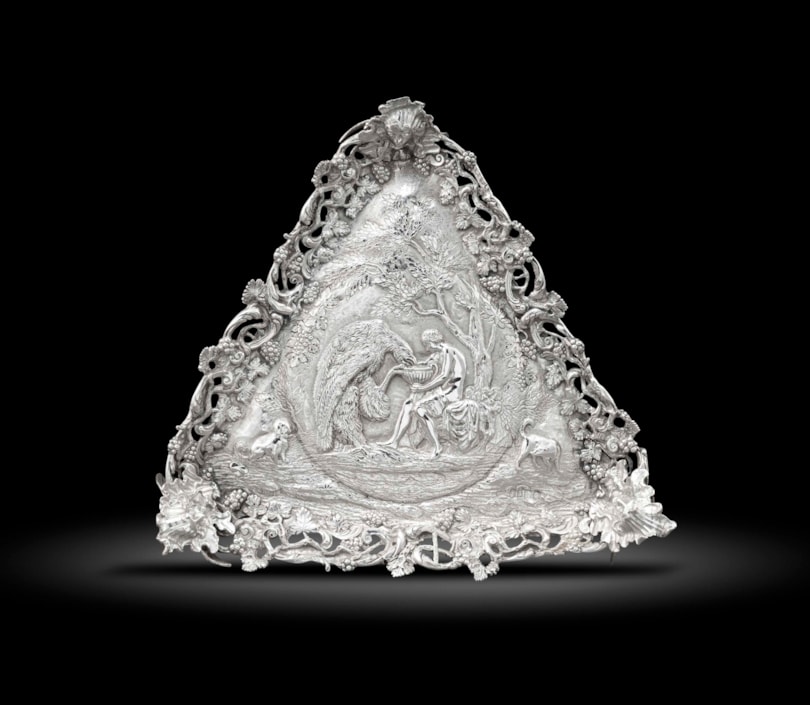Silenus was a companion and tutor to the wine god Dionysus. A notorious consumer of wine, he was usually drunk and had to be supported by satyrs or carried by a donkey. Silenus was described as the oldest, wisest and most drunken of the followers of Dionysus, and was said in Orphic hymns to be the young god's tutor. This puts him in a company of phallic or half-animal tutors of the gods, a group that includes Priapus, Hermaphroditus, Cedalion and Chiron, but also includes Pallas, the tutor of Athena. When intoxicated, Silenus was said to possess special knowledge and the power of prophecy.
This scene is also accompanied by an array of beasts including a trumpeting elephant and a camel shaded by trees and hunting dogs. The spout of the kettle formed as an eagle’s head with acanthus and Bacchic mask.
The stand of the kettle equally as fantastical with a serpent, shells, a phoenix, geese and swans. The kettle stand on three cast eagle and ball feet supporting the flat stand with the most fantastic, chased scene of Zeus in the form of an eagle drinking from the cupbearer of the gods Ganymede. Ganymedes was the loveliest born of the race of mortals, and therefore the gods caught him away to themselves, to be Zeus' wine-pourer, for the sake of his beauty, so he might be among the immortals. The border of the kettle stand cast and pirced trailing grape and vines between three Bacchic masks.
Farrell's apprenticeship or freedom are unrecorded, and his early life is relatively unknown. Holden's Triennial Directory of 1805-7 described him as a silversmith, but his first mark was not registered until 1813. The most productive period of Farrell's career coincided with his association with the entrepreneur, silversmith, and jeweller Kensington Lewis, whose most important patron was Frederick, Duke of York.
Lewis was supplied with extravagant sculptural plate in a variety of revival styles by Farrell, drawing principally on seventeenth-century Flemish, German and Italian designs in high relief. Lewis' business was unable to recover from the death of the Duke of York in 1827, and Farrell no longer had the opportunity to make the plate on such a grand scale. Thereafter, he was best known for highly embossed tea services chased with decoration derived from seventeenth-century Dutch and Flemish genre paintings and in particular David Teniers the Younger.
Teniers was one of the most important seventeenth-century Flemish painters of low-life scenes. He first studied painting under his father in Antwerp. Although he painted some small religious pieces in the 1630s, it was his genre scenes that were most popular and for which he is best remembered. By 1633 he had become master of the Antwerp Guild of St Luke, and in 1644 he was appointed as Dean. He enjoyed the patronage of some of the most prominent men in the southern Netherlands, including the Bishop of Bruges and Archduke Leopold William, to whom he became court painter in 1651. Teniers’s success brought him great wealth, and his paintings remained popular long after his death. They were particularly admired by nineteenth-century collectors.
Farrell's apprenticeship or freedom are unrecorded, and his early life is relatively unknown. Holden's Triennial Directory of 1805-7 described him as a silversmith, but his first mark was not registered until 1813. The most productive period of Farrell's career coincided with his association with the entrepreneur, silversmith, and jeweller Kensington Lewis, whose most important patron was Frederick, Duke of York. Lewis was supplied with extravagant sculptural plate in a variety of revival styles by Farrell, drawing principally on seventeenth-century Flemish, German and Italian designs in high relief. Lewis' business was unable to recover from the death of the Duke of York in 1827, and Farrell no longer had the opportunity to make the plate on such a grand scale. Thereafter, he was best known for highly embossed tea services chased with decoration derived from seventeenth-century Dutch genre painting.
You May Also Like




